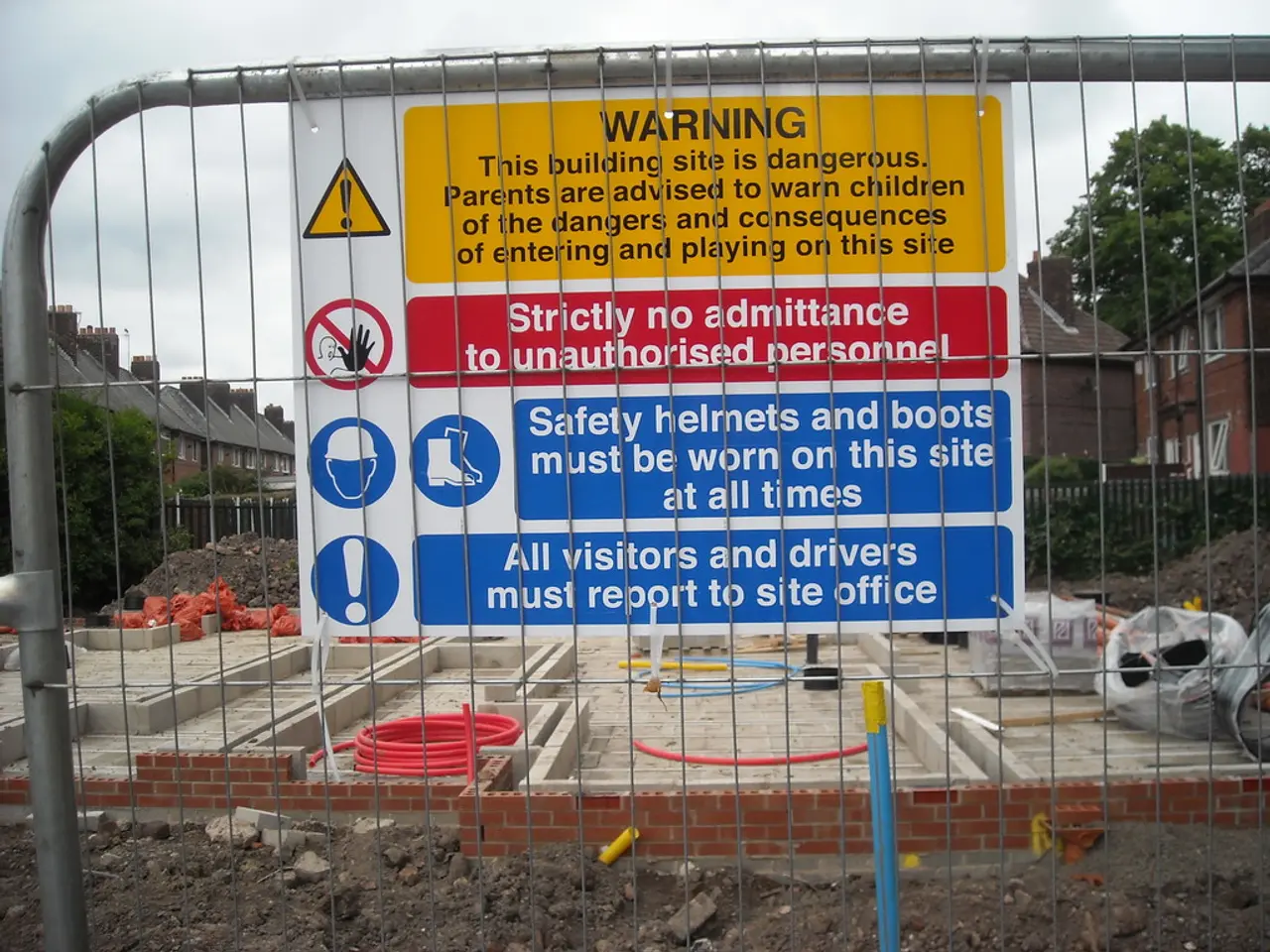Ensuring the Success of Construction Projects through Efficient Risk Management
In the dynamic world of construction, risk management plays a crucial role in ensuring project success, safeguarding resources, and mitigating potential liabilities.
Comprehensive contingency plans are a key component of effective risk management. These plans not only safeguard project integrity but also foster stakeholder trust by demonstrating a proactive approach to unforeseen events. Contingency planning involves developing a structured approach to manage risks that may disrupt construction projects, including identifying potential risks, assessing their impact, and formulating response strategies.
Contract law is another significant player in risk management. It allocates responsibilities, liabilities, and risks among parties, specifies terms for timely completion and quality standards, and provides a legal framework for resolving disputes.
Workers' compensation insurance is mandatory in many jurisdictions, providing medical benefits and wage replacement to employees injured on the job. Liability coverage is essential for contractors, offering protection from lawsuits related to accidents or professional negligence. Insurance solutions provide financial protection against unforeseen events that could impact project timelines or costs.
Compliance with local building codes, environmental regulations, and health and safety standards is critical in mitigating legal risks. Non-compliance can lead to costly fines, delays, and even project termination.
Technology significantly enhances risk management in construction. Project management software streamlines the identification and evaluation of potential risks, leading to informed decision-making processes. Emerging trends in risk management include the integration of artificial intelligence and machine learning for risk prediction and assessment, a growing emphasis on sustainability and environmental considerations, collaborative risk management through enhanced communication platforms, and adapting to regulatory changes for legal compliance.
Drones revolutionize safety monitoring by providing aerial views of construction sites, helping in identifying safety hazards and assessing site conditions more efficiently. Building Information Modeling (BIM) aids in identifying design conflicts before construction begins, thereby minimizing costly delays.
Preventive measures in risk management include thorough planning, safety training for workers, and routine inspections to identify hazardous conditions. These measures help to minimise the likelihood and impact of risks, making projects run more smoothly and efficiently.
Risks in construction projects can stem from various sources, including economic fluctuations, regulatory changes, and on-site safety issues. Effective risk management is essential for ensuring project success, safeguarding resources, and mitigating potential liabilities.
It's worth noting that the organization that conducted the comprehensive risk assessment for the Denver International Airport project, identifying potential risks and monitoring them with strict controls, is not specified in the provided search results. However, such thorough risk management practices have become increasingly common in the construction industry, fostering a culture of safety and compliance.
In conclusion, effective risk management is a cornerstone of successful construction projects. By implementing comprehensive contingency plans, leveraging contract law, utilising insurance solutions, ensuring compliance, and harnessing the power of technology, the construction industry can navigate the challenges of project management with confidence and efficiency.







